Last May I was asked to speak at an Environmental Day that my old high school was hosting, and you can read about the event in a blog post here. I never posted the contents of the speech but I just came across it and better late than never. I know it's a bit lengthy and there are no photos but there is still some informative info and maybe some food for thought. I hope you enjoy reading and it and maybe learn a thing or two, I know I did when researching many topics that I spoke about. It also tells a bit about my background and how I came to be where I am today. As the speech was written almost a year ago some information about my work situation has changed, but the gist is the same. I am always happy to start a dialogue of how we can make getting dressed more eco friendly so please let me know if you have any questions. Enjoy!
Hello!
My name is Nicole Lebreux and I am the owner of Fidget Finds, a small independent vintage clothing and accessories boutique. I currently sell my wares on the internet via fidgetfinds.com and in weekend markets in RI and MA. I also design and manufacture environmentally conscious clothing made from vintage and other green fabrics.
I am a 2001 graduate of Tiverton High School. With the help of my fantastic teachers and extracurricular activities I was accepted to the Fashion Institute of Technology in Manhattan and proceeded to earn my Bachelor of Fine Arts in the Spring of 2005. I loved going to school in New York City; it was new and exciting, fast paced with new ideas and adventures around every corner. An internship during school led to a job at a Private Label fashion company where I was the assistant designer, although actually designing was at the bottom of the list of things that I actually did. My main tasks were choosing fabric and buttons, making sure samples were made correctly, making photocopies, and emailing, lots of emailing between different departments and other companies that we worked with. My company did nothing in regards to being environmentally conscious, even recycling. I used to take paper , which we used way too much of, and cans of soda from the kitchen waste basket home with me to recycle. It hurt my heart to see reusable items so carelessly thrown away. Even all this paper wasting and lack of basic concern for the environment wasn't enough for me to see the light. But I'll never forget the moment when I actually did. I was standing in front of the copy machine, photocopying reports on the factories in China that we used for production that were going to be sent to a big fashion house, Calvin Klein, Tommy Hilfiger big. My eyes started watering immediately when I saw the hours worked and wages earned by these poor people. These reports were being sent so this big fashion house could see that these factories met their manufacturing standards and could be used for production. I couldn't stand it any longer. I decided that enough was enough. I had to move home. I couldn't work for a company in an industry with such widespread and common disregard for the environment and basic human rights. I also couldn't live in a place so far removed from nature where it was necessary to take some sort of public transportation to sit on a patch of grass outside.
I think about a month or so later I packed up my outrageously overpriced one bedroom in Astoria and headed back to Little Rhody, my favorite place on earth. There's not much for eco friendly fashion jobs in these parts so I knew I was going to have to make something up on my own. In the fall of 2007 fidget finds was formed. At first she was just a little website skipping along until November 2008 when I opened a retail shop in Newport. After a successful year in business my little be bop shop closed this past December after much thought and consideration. I decided to spend the months of January and February traveling in Southeast Asia reflecting and learning many a valuable lesson. The first of which was gratitude. We all need to be thankful for everything and everyone that we have have every second of every day. You don't even realize everything that you take for granted until you see people living, happily I might add, with was we would call nothing. While they seem quite separate being thankful and environmentalism go hand in hand. When you appreciate this beautiful planet that we all get to live on, you are driven to care for it. This earth is very small and we share it with many people. Although China, Thailand, and Laos seem like a world away, we all swim in the same ocean and breathe the same air. Everything is connected. Our everyday decisions affect many people that we will never have the pleasure of knowing. I had originally thought that this trip would change my whole perspective on the universe and unlock these secret parts of my brain to answer all my questions to the mysteries of life. Well, it didn't. What it did do was make me glad to be me. Glad to be born an American, living in Rhode Island and pursuing my dream to be a self sufficient business owner and eco friendly fashion designer. I do it because I want to, and more importantly because I can.
Needless to say, my perspective was greatly altered during my time away. I thought to make a difference or to change the world I should become a social worker or volunteer for an NGO. You don't. You just need to be true to yourself and lead by positive example. Be the change you wish to see in the world, said Ghandi. So that is how I choose to live my life and run my business.
Fashion by nature is fickle, and therefore wasteful. New product is developed, produced, and distributed at least twice a year, while most big stores and designers bring out new inventory at least every few weeks. Fashion magazines and websites are always promoting items that "you need now" but it changes every month. Trends and "what's cool" is constantly changing, leaving all the newly "uncool" and "untrendy" items useless and without anyone who wants them, otherwise known as waste. Fast Fashion as it's dubbed in the fashion industry is categorized by trendy clothing that is made cheaply, sold cheaply, and is only meant to be worn for a short amount of time due to its trendiness or lack of quality in fabric or manufacturing. You all know what I mean by this; Target, Walmart, H&M, and Forever 21 are top contributors. According to the EPA, Americans throw away an average of 68 lbs of clothing every year. Sorry girls, but you're the main offenders. Teenage girls purchase and get rid of more clothing than any other group. They throw away seven times the amount of clothing as their male counterparts. The waste of this fast fashion phenomenon does not only include the trash of thrown away clothing but all of the environmental hazards that occur in producing the fabric for these garments. Cotton, one of the worlds most widely used fibers, while it is marketed as clean and fluffy white is actually one of the biggest pollutants. This crop accounts for a quarter of all the pesticides used in the US, the largest exporter of cotton in the world, according to the USDA. Huge amounts of water, chemicals, and detergents are needed to clean and prepare the fiber to be made into fabric. Another big problem with conventionally grown cotton is the dying of it. Most dyes contain chemicals, salts, and metals. When not treated or disposed of correctly these harmful components end up in waterways, which leads to problems in the soil and drinking water. Polyester is also a big offender as it is made from petroleum. As is true with other synthetic fibers, the production of polyester is a very energy intensive process that uses large amounts of crude oil and releases harmful emissions.
I just named some of the environmental hazards of clothing and textile production which undoubtedly affects peoples lives, but now I'd like to talk about the actual human beings that are producing your clothing. I will spare you the horrific photographs of sweatshop factories and child labor but know that they do exist. I wish I remembered the numbers on that sheet I was photocopying a few short years ago, but I don't. Either from shock or disbelief they didn't remain part of my memory. I can tell you however that China's minimum wage is under $1 an hour, and we can all presume that number isn't always enforced. According to figures from the US National Labor Committee, some Chinese workers make as little as 12-18 cents per hour working long hours in poor conditions. People working in these factories often develop respiratory problems from breathing in chemicals or dust from producing fabrics, many of which lead to death. There is also the problem of out of date machinery that can easily amputate limbs. Children also work long hours and for low wages in the production of clothing overseas. In 2007, Gap Inc. admitted to using child labor in the production of blouses for Gap Kids. If that isn't big corporations taking advantage, then I'm not sure what is. I also want to note that I'm aware of the controversies involving sweatshops and child labor. Many developing nations use cheap labor to improve the state of their country as a whole and to move toward being a first world nation. Indeed this was the state of America at the turn of the century. We had sweatshops and child labor in many of those old mill buildings you see in North Tiverton, Fall River, and New Bedford. Some people say it is just the nature of developing countries and that in time these crimes with dissipate. The decision of how much you choose to participate in this system is up to you.
I take steps every day in my business and personal life to limit my carbon footprint as much as possible. I have always admired vintage clothing for it's style, craftsmanship, and quality and have been shopping in thrift stores since middle school. It was a cheap way to dress uniquely and not look like everyone else. Buying vintage, thrift, and consignment store clothing is in itself recycling; using something that already exists for a new purpose. You are not buying something new, fresh from the production belt of China, Honduras, or Bangladesh that needs to be quickly replaced on the store shelf but rather something that has already been used and loved. You are giving it a new life rather than letting it rot in a landfill. I also do most of my business transactions over the internet, I hardly use paper for anything except for maybe notes or to do lists and for that I use the backs of junk mail. My headquarters is in one of those old mill buildings I mentioned previously. While many of these old buildings are becoming eye sores and safety hazards, a group of like minded artists decided to put one of these buildings to good use. Now it is the home of many small businesses, entrepreneurs, and artists. When making new clothing I use vintage fabrics or when I need to buy new fabrics I used environmentally friendly ones such as organic cotton, which doesn't use chemical fertilizers or pesticides, bamboo which is a very fast growing renewable resource, hemp which doesn't need pesticides and can be grown very densely, and soy which is made from tofu manufacturing waste. I also produce all of my new clothing in Southeastern New England. This saves on fuel costs of transportation and provides jobs in the local economy.
We are all lucky enough to live in a country where we have something that many others around the world are not granted: choices. And as always, our decisions have consequences, specifically our decisions of what we are going to spend our money on. Manufacturers s aren't going to sell things that no one is buying. Sales in thrift, vintage, and consignment stores has grown tremendously over the past few years due to the economy but also to people's realization that we need to take care of this one planet we have. There are many simple things that you can do when it comes to clothing to help save the environment. Most of them save money too.
What you can do:
Fix garments that need mending. Don't just throw something away because the seam tore open or a button fell off.
Don't be tempted to buy things that you don't need or will only wear a few times.
Wash clothing not as often and in cold water.
Buy clothing made from organic or eco friendly fabrics.
Buy clothing produced locally or by small designers.
Buy used clothing, from thrift stores or vintage, consignment.
Buy fewer more expensive but better made garments rather than many cheaply made ones.
Most importantly, educate yourself
I just want to end by saying that we all need to do our part. Every little bit helps.
Thursday, April 28, 2011
Sunday, April 24, 2011
Fidget Loves 1920's French Fashion

Oh, this old thing?
Hello. Agnes here and welcome back for another feature of fashion highlights from decades past. Today I will obsess over French fashion plates that were published in La Gazette du Bon Ton during its run from 1912 to 1925. The magazine was marketed toward the Parisian elite and was arguably the most influential fashion magazine of its time. It's title was derived from the French concept of bon ton, meaning timeless good taste and refinement. The editor of the magazine, Lucien Vogel, was able to enlist the most successful couturiers and the finest illustrators working in Paris. The results are awe-inspiring, see for yourself.



from left to right:
HAVE I COME TOO EARLY?
Theater Wrap by Paul Poiret. Drawn by Georges Lepape, 1912.
WOMAN AND PUPPETS.
Marionettes. Drawn by Georges Lepape, 1913.
TOO MUCH TO CHOOSE FROM.
Tailored Suit by Paul Poiret. Drawn by Georges Lepape, 1913.
The purpose of the illustrations was to establish fashion as an art alongside painting, sculpture, and drawing. Thus making the fashion plates a stepping stone for fashion illustration and fashion photography through its use of picturesque settings, vivid colors and eye catching poses. As quoted in the magazine's first editorial, "The clothing of a woman is a pleasure for the eye that cannot be judged inferior to the other arts."



AUTUMN CROCUSES.
Traveling Cloak by Paquin. Drawn by George Barbier, 1914.
AT THE COMEDY.
Theater Wrap by Paquin. Drawn by J. Gose, 1912.
THEY'RE LOOKING AT US.
New Summer Muffs. Drawn by Georges Lepape, 1913.
Each issue of La Gazette du Bon Ton featured ten full-page fashion plates. Seven depicting couture designs and three inspired by couture but designed solely by the illustrators. The freedom given to the illustrators led to an intimate and fascinating social commentary much like the current street photography being done by the genius that is Bill Cunningham at the New York Times.
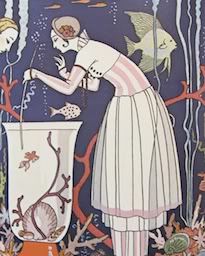


THE STUNNING LITTLE FISH.
Summer Dress. Drawn by George Barbier, 1914.
AT PALM BEACH.
Tailored Outfit by Worth. Drawn by George Barbier, 1921.
THE SEASHELL FOUNTAIN.
Evening Gown by Paquin. Drawn by George Barbier, 1914.
The magazine both created and recorded fashion history in the crucial years that transitioned from the decadent and lavish belle époque through the typical look of the mid twenties and the art deco movement: sheath dresses, boyish bobs, geometric symmetry and true glamour.



THE ANTIQUE MINIATURE.
Dinner Gown by Redfern. Drawn by Bernard Boutet de Monvel, 1913.
AVENUE DU BOIS.
Drawn by Drian, 1915.
COROMANDEL.
Evening Wrap and Gown. Drawn by George Barbier, 1914.
Rather than merely showing off the featured garment, the fashion plates serve as a window to the 1920's and its upper class lifestyle, manners, social environments, and leisure pursuits through including dramatic and narrative situations. My personal favorite being "THE BEAUTIFUL LADY WITHOUT PITY" for obvious reasons.



ALMS.
Fancy Tailored Outfit. Drawn by Georges Lepape, 1914.
THE LADIES' ADVISER.
Theater Gown and Wrap. Drawn by George Barbier, 1913.
FROM THE APPLE TO THE LIPS.
Masquerade Costume by Redfern. Drawn by Charles Martin, 1913.
The couture pieces include gorgeous evening gowns, tailored suits, walking and summer outfits, theater, ballroom and masquerade costumes. Resulting in a fashion show of women’s wear from pre depression era Paris when the most daring, luxurious designs were customary seasonal additions to the wardrobe.

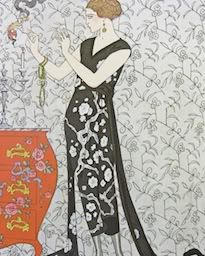

THE BEAUTIFUL LADY WITHOUT PITY.
Evening Gown by Worth. Drawn by George Barbier,1921.
SMOKE.
Evening Gown by Beer. Drawn by George Barbier, 1921.
THE MILKY WAY.
Evening Gown and Cape by Worth. Drawn by George Barbier, 1921.
The extremely rich and vivid colors were achieved through fine pochoir hand coloring. Pochoir is the French word for stenciling, a form of coloring pictures that dates to a thousand years ago in China. The manual aspect of pochoir has been both one of its most valuable attributes and one of its greatest failures as a medium. Pochoir is both labor-and time-intensive, making it an expensive and slow process of printmaking.



PARISIAN ENCUMBERANCES.
Afternoon Coat by Doeuillet. Drawn by Andre E. Marty, 1920.
GOODNESS, HOW COLD IT IS.
Winter Coat by Paul Poiret. Drawn by Georges Lepape, 1913.
BY MOONLIGHT.
Evening Wrap by Paul Poiret. Drawn by Georges Lepape, 1913.
The pochoir process would use from 20 to 250 different stencils applied to a black-and-white collotype print from a photograph. A craftsman known as a découpeur would cut stencils with a straight-edged knife. The stencils were originally made of aluminum, copper, or zinc. Stencils created by the découpeur would be passed on to the coloristes. The coloristes applied the pigments using a variety of different brushes and methods of paint application to create the finished pochoir print.



WITCHCRAFT.
Evening Gown by Beer. Drawn by George Barbier, 1922.
THE MIRROR / A PASSING GLANCE.
Evening Wrap by Paul Poiret. Drawn by Andre E. Marty, 1922.
THE PROLOGUE / AMATEUR PERFORMANCE AT THE COUNTRY ESTATE.
Evening Gown. Drawn by Pierre Brissaud.
Well I'm spent. Check back soon for more salivating vintage tidbits.
Yours truly,
Agnes
Thursday, April 21, 2011
Fidget's Finds of The Week
Check out some of the lovely new additions to our shop!
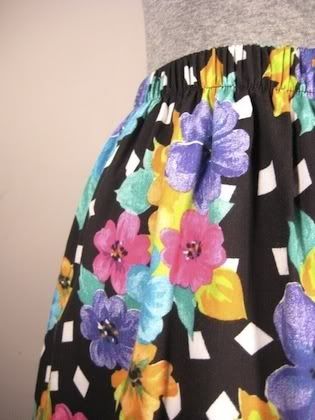



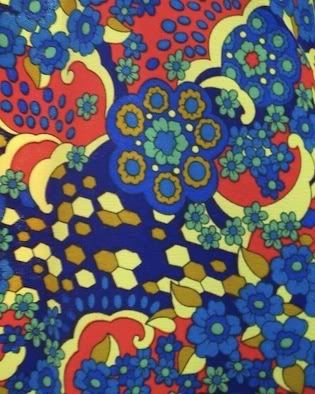

Click here.
Thanks for looking and have a great weekend!






Click here.
Thanks for looking and have a great weekend!
Monday, April 18, 2011
Signs of Spring!
Wednesday, April 13, 2011
Fidget Loves Biba!



Hello. I am Agnes and lucky for you, you caught me on a good day. Fidget asked me to share some vintage tidbits on the computer in return for some smokes and a bottle of dry vermouth. I will begin with the fashion icon and legend that is Barbara Hulanicki.

Babs pioneered a fashion revolution in London with her Biba shop in the late 1960's when she was the first designer to target her designs entirely toward younger people with trendsetting collections, a glamorous storefront and a deliberately low price point.

In 1964, Barbara started selling her first ready to wear designs in London via mail order from fashion sections in various magazines. Her first significant success was a pink gingham dress that was advertised in the Daily Mirror around the same time that Brigitte Bardot wore a near exact replica as her wedding dress. It is said that over 4,000 orders came in by the next day. Soon after, she opened a shop named Biba on Arbington Road in London in September of the same year.


Barbara’s aesthetic was heavily influenced by Art Deco and Art Nouveau styles and she designed flattering clothing for more slender figures than was custom at the time. She described her customers as ‘postwar babies who had been deprived of nourishing protein in childhood and grew up into beautiful skinny people: a designer's dream. It didn’t take much for them to look outstanding.’ These women were mostly teenagers or twenty somethings, who simply wanted to wear clothing that was affordable and looked good on them.




The shop itself seemed like an exclusive club with its blaring music, celebrity sightings and rooftop garden but it was just as accessible for the common girl as it was for the budding socialite. The windows were always fantastically displayed and at Biba you would come across such extremes as metallics mixed with dusky colors, mini skirts alongside maxi coats, platforms lined up with Victorian boots, and movie actresses lined up with five and dime store employees. If I die tomorrow, I hope to end up at the Biba shop circa 1966. To be more specific, I want to be making Mick Jagger and Marianne Faithful wait in the dressing room line while I take my time contemplating which color feather boa would best match my new checkered three piece pants suit.




Here is an excerpt from an interview with Barbara Hulanicki in Vice Magazine from 2009:
Vice: It seems like you had such a clear vision with Biba. It was a very specific art-nouveau- and art-deco-inspired, old-Hollywood glamour look. I was wondering how that came about.
Barbara: First and foremost, the inspiration was the period in which we were living. There were absolutely no clothes for young people in England. I mean, in America there were wonderful things happening in the early 60s but in the UK we were all desperate, just desperate, for clothes. Another inspiration was old movies—mostly things with Garbo and American musicals.
Vice: The color palette was great. Everything was dark browns and purples and lots of black. It was very lush and boudoirish.
Barbara: I was designing in England, which is very dark and gloomy, and our color palette there is not as strong as it is in America. For instance, where I am now, in Miami, the sun soaks up color. So it was all to do with light, really.
Vice: I read that you were in art school and you started out as a fashion illustrator.
Barbara: I did fashion design at art school, but that seemed to take too long. I was desperate to get a job and get out of my home life and be independent. Illustration was often used in editorials back then—photography hadn’t caught on yet. It seemed the quickest way to get to be independent but still have something to do with fashion.
Vice: How did you go from illustrating to making and selling clothes?
Barbara: I was illustrating in a studio when I met my husband, Fitz, who was in advertising. He said, “You’ve got to go back to design. You’ve got to go freelance,” which I did and my career really rocketed. I was in all the big magazines—Women’s Wear Daily, Vogue, Harper’s, Queen magazine—and traveling a lot to France, doing shows there. That was amazing training. I kept seeing that there was absolutely nothing for the young. Paris was all for ladies who lunched.
Vice: It seems like everything you were doing—the clothes, the shop, the way you presented retail as an “experience”—was the complete opposite of what everyone else was doing at the time.
Barbara: Well, it was all the things I wanted myself. First of all, I had a loving husband who hated shopping. So I thought that a way to get the boys to stay was to get them a seat. Then they could watch the girls and it would work. Remember, there weren’t that many clubs in those days. People didn’t go and eat out. There weren’t that many concerts. Now you can hang out in all sorts of places, even Starbucks, but there used to be nowhere like that. The boutique, especially on a Saturday, became a big meeting place.
Vice: In the beginning, everything you made was limited run, which really created the idea of cult items that people just had to have.
Barbara: Retail is like fishing. You never know what’s going to sell big. We were cautious. We sold, and as we sold, we made more. Everything was practical, it wasn’t thought out in a marketing room or anything.
Vice: It’s so different now.
Barbara: Yes. Everything is marketed for us and then they put money into it. We were doing it the other way around.
Vice: It must have been exciting to do it that way.
Barbara: Tremendously. You’ve no idea. You never knew when you were going to catch the big one. In retail, it’s this moment that counts, not tomorrow, not the next day, not yesterday. You have to keep making money. Otherwise you die.
Vice: I was reading about the catalogues that you produced. In the 50s and 60s, catalogues were thick books of drawings. You were the first to do a catalogue with photos that looked like magazine editorials.
Barbara: I was madly in love with photography and photographers and I said, “Wow, now is the chance to use some of these incredible people.” I mean, can you imagine, we had Helmut Newton doing it! He was big then, but not that big. I went through a friend of mine who was working at the Observer and I said, “Please ask him!” She said, “Of course he will, he would love to.”
Vice: Never know until you ask, I guess.
Barbara: Absolutely.
Vice: You had so many different ideas, and many of them you actually brought to fruition. There was a men’s line, a children’s line, shoes, jewelry, grocery items, coffee, tea, cat food, dog food—even Biba baked beans! I’ve also read about a Biba car that was being planned.
Barbara: That never happened, but we were absolutely planning it.
Vice: You came out with a black lipstick, right?
Barbara: Yes.
Vice: You were so ahead of the times! Even nowadays, if somebody does something that bold, people freak out. As recently as last year, YSL put black lipstick on their models and people were like, “Ooh, it’s so weird.” I can’t imagine what people thought about something like that in the 60s.
Barbara: Well, you see, we were starting from zero because lipstick then was coral. That was it. So we had a completely blank canvas. That new generation was so hungry for anything new. It was fantastic. Our first lipstick was chocolate brown and it sold out in two seconds!
Vice: Did you wear the lipstick as well?
Barbara: Oh yeah.
Vice: It sounds like you were creating an army of young girls that were all tuned into your look.
Barbara: Yes, because I was tuned into them. I mean, it’s important that you’re tuned into your public. The English public is incredibly open and eccentric, totally open to new ideas. They’re not frightened of being laughed at.
Vice: Let’s jump ahead to when you moved into the seven-story “Big Biba” store. Not only was it a full-service department store, it was, again, a place to hang out. You had film stars, artists, and rock stars like the Rolling Stones and David Bowie coming in. Brigitte Bardot would be there. It just struck me that nowadays a lot of designers court celebrities so they can pack the front row of their shows with them and get them to wear their clothes.
Barbara: Right, they pay them.
Vice: Yeah. But it seems like people just naturally came to hang out at the Biba store because it was a cool place to be.
Barbara: I’ll tell you what, we had fabulous-looking girls in the shop and that was enough to bring those boys in. Even when you get a girl that isn’t so fabulous, she becomes fabulous because she’s with the others and she can try things on and look nice. So, they bloom, they bloom. Birds of a feather.
Here are some "Bibaesque" pieces that Fidget currently has for sale in her shop:

Stamped Gold with Turquoise Pendant Necklace
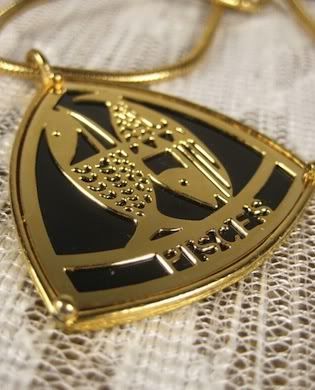

Black and Gold Pisces Pendant Necklace and Oversized Geometric Silver and Red Pendant Necklace

Perfect Sparkly Gold Clutch
Barbara Hulanicki continues to push the boundaries with her current interior and fashion designs. In addition, there is a “Biba” musical in the works, an amazing documentary called “Beyond Biba” came out in 2009 and Biba is back - The House of Fraser relaunched the Biba brand in 2010. Below are photos from the Biba Spring/Summer 2011 Collection and a trailer for "Beyond Biba".



Biba Spring Summer 2011 Collection
Beyond Biba Trailer
That does it for now. So scram and check back soon for more fashion highlights from decades past.
Yours truly, Agnes.
Subscribe to:
Comments (Atom)


